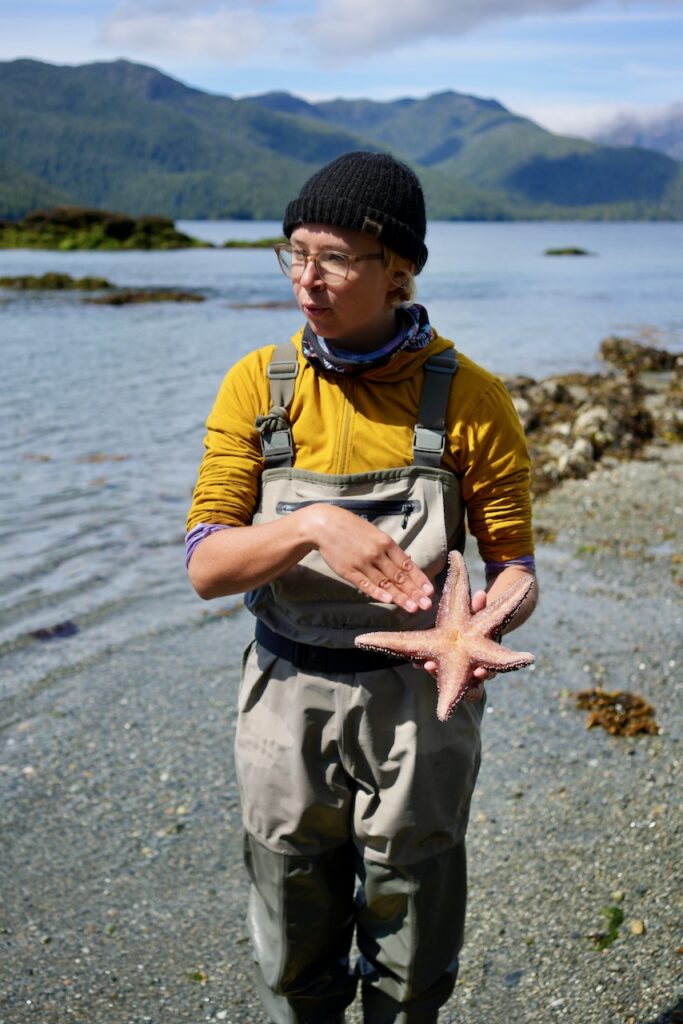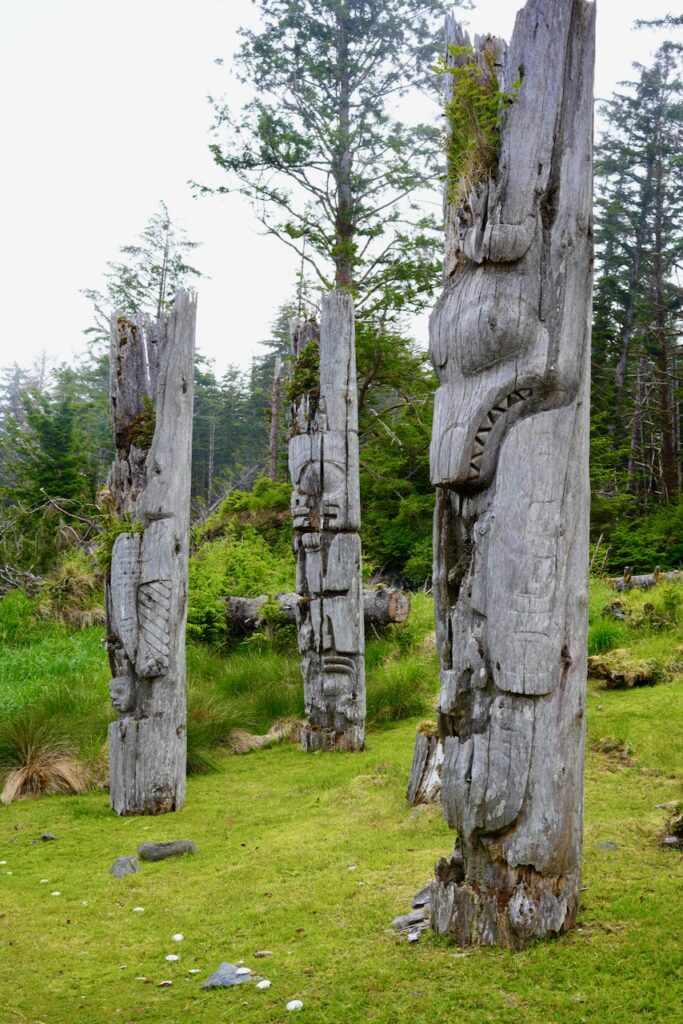Haida Gwaii, Islands of the People, lie offshore northern British Columbia appearing on a chart much like the tattered sail of an ancient Hawaiian war canoe lost in the eastern Pacific.
The islands are garrisoned by the Hecate Strait sifting her shallow seabed this way and that in currents often in opposition to winds and caring nothing for the expediency of travelers. Haida Gwaii is inconvenient for mariners traveling the Inside Passage, requiring an unlikely conjugation of light winds, minimal ground seas and tides well-timed.
Jupiter’s crew set aside cruising here for years until it felt truant. A window in the seaweather was found to cross the notorious strait from Welcome Harbour to Sandspit Marina on Moresby Island, the portal to Haida Gwaii.


The geomorphology of these islands instantly feels unfamiliar, inviting curiosity and interpretation of ancient Haida culture breathing still in morefold abandoned village sites, and revelation of the dark history of near extermination since contact.
We sign on with Moresby Explorers for a four-day mentored expedition aboard fast, stable and open Zodiac boats. The rigid inflatables are navigated through labyrinthian channels by expert coxswains and grounded at shoreline sites on any tide to visit interesting and important sites.
Astrological travelers dress for exposure to winds and ropey seas during long passages.
Boats carry duffels and packs, lunches and snacks and safety gear. Passengers are deployed like a saddled marine expeditionary force in numbing boots-to-butts formation studying the backs of strangers’ hooded heads.
Commandos self-selected into a remarkable adventure soon become colleagues sharing unexpected ventures, becoming a coherent team.
During long days we bootsplash on twenty shores, mount numberless beached logs and fractious rocks, hike through old and new growth forests, finding artifacts from two recent centuries.
Manifold villages and historic sites remain abandoned after thousands of years of previous occupation, protected and propagating the resurging Haida culture.
D’Leen is a star student of art and archaeology. Jeanne is a multi-lingual geomorphologist.
Both are passionate and affable guides and accomplished mariners.
We attend a feral university schooled by our guides and the Watchmen of village sites, offering praxis and pedagogy in evocative context. Gwaii Haanas National Park, National Marine Conservation Area Reserve and Haida Heritage Site extends over much of Moresby Island.
The governing document begins with an agreement to disagree about ownership of the land, but crafts cooperative management between the Haida Council and the National Parks system.
Sealions at Joyce Rock near the now abandoned Jedway Mines.
Copper, silver, iron and gold were all extracted from Moresby Island.
Within these boundaries are found Watchmen Sites where Haida staff attend to old settlements and protect the structures and assets that remain. The Haida are tenaciously building a future commonwealth of cultural and economic resources from their ancestral legacies.
Windy Bay
In 1985 the Haida people protested logging on Lyell Island, which action ultimately led to the establishment of Gwaii Haanas as a cooperatively managed area. At Windy Bay (Hlk’yah GawGa) The hatted images carved into the Legacy Pole represent the protestors, and The Blinking House was built as their shelter.
SGang Gwaay
SGang Gwaay (Anthony Island) is designated as a UNESCO World Heritage Site. We emerge from thick marine fog onto a beach to access the ancient settlement through narrow paths and wooden walks.
Slowly decomposing standing and fallen poles abound and spirits of ancestors push into present consciousness.
Tanu
At Tanu (T’aanuu Llnagaay) there were once 25-40 longhouses occupied by people of the Raven and Eagle moieties. Remains of roof beams and corner posts, vertical and horizontal ceremonial poles, viridescent with moss can still be discerned.
An octopus garden survives, with a rock wall built to allow tentacled access at high tide, entrapment at low. Rock piles within lure the octopuses into comfortable habitat where they can be easily harvested.
We spend two nights in Crescent Inlet at the Moresby Explorer’s Floathouse where good food and camaraderie are abundant.


At the southern tip of Moresby Island we weather a night at Rose Cottage with a wood burning shower and plenty of hooks.


A Haida canoe blanketed with moss rests unfinished and abandoned in the forest.
Canoes were formed where a suitable tree was felled, then moved shoreward after shaping.
We sight a Minke Whale, solitary and elusive.



Among the Haida Indians of the Pacific Northwest, the verb for making poetry is the same as the verb to breathe.
Tom Robbins ~ Another Roadside Attraction


























Randy & Fiona – You guys are indeed remarkable Explorers. This post, the historical subject matter, photographs, and descriptions are incredibly interesting and amazing. I so enjoyed it all. Thank you for sharing. Keep up the great work. Hope to see you in the near future. 💕😎
Thanks for sharing it with us Dana. It is an honor to experience such a place, and to share it with our friends. The subject matter is weighty and fascinating.
This is unspeakably amazing. Such adventure and so much to learn and see. So happy you were able to do this. Stunning.
DeeDee
We feel incredibly fortunate to have had this experience. We learned a lot about the Haida and about ourselves! So much to learn and see, and to remember.
Breathtaking images! The velvety green moss is covering a rich history. You are witnesses to an incredible corner of the world. Thank you for taking us along. Miss you.
It is and we are! In ten more years I wonder what will be left to see. Thanks for journeying with us. We miss you too!